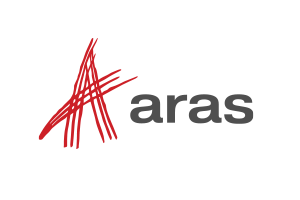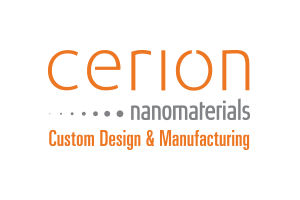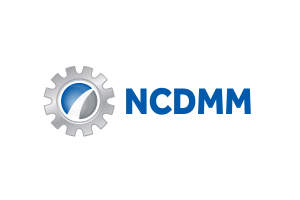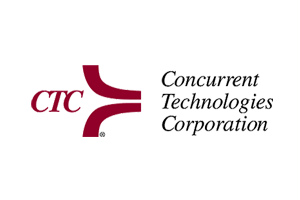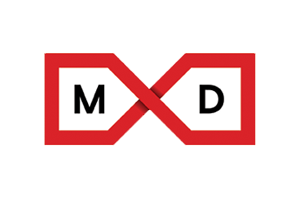Call for Abstracts
Abstract submission is closed.
Abstract Submissions
Technical sessions will be offered throughout the week on manufacturing topics of relevance to the DoD and national security. Topics will address multi-disciplinary approaches to advancing existing and emerging technology areas to serve imperative national security interests of the United States. The event encourages engagement from experts working in government, industry, and academia to participate and address comprehensive solutions to some of DoD’s most complex and pressing manufacturing challenges. The conference audience is comprised of all levels from across the defense industrial base, ranging from CEO-and Flag Officer/SES-level to working-level manufacturing-oriented engineers, scientists, business practice/policy makers and technology implementers, system designers, and representatives of the warfighters.
PLEASE NOTE: All Accepted Authors/Abstracts for DMC 2025 will be expected to give their presentation in-person at the DMC 2025 Conference in Orlando, Florida.
Important Dates
Registration Deadline: Oct 23
Presentations Due: Nov 7
Submission Deadline: July 14
Abstract Notification: Sep 5
Abstract Topics
Advanced Manufacturing Enterprise
The Advanced Manufacturing Enterprise (AME) subpanel is requesting abstracts for presentations to be given at DMC 2025. The abstract should explicitly identify the specific thrust area, best practice, or lesson learned that will be presented. Abstracts may also include a representative figure. Presentations on the following topics will be given preference:
- Model-Based Engineering for Defense Systems
- Digital Information Visualization for Manufacturing
- Digital Technologies for Advanced Manufacturing
More information about DMC 2025 preferred topics is provided below.
Topic 1: Model-Based Engineering for Defense Systems
Description: The mass decentralization of manufacturing systems and ever-increasing complexity of supply chains have sharpened the lens on the proper handling of data. Data remains the true currency of modern enterprises. Yet, the Defense Industrial Base and Department of Defense still face challenges in data curation, data exchange, and efficient modeling. The AME Subpanel invites presentations to spark discussions on innovative solutions in model-based engineering for DoD platforms. Potential topics of interests include but are not limited to:
- Digitalization in production systems through smart manufacturing and Industry 4.0 approaches
- Approaches for model-based systems engineering to expedite acquisition, particularly those driving earlier consideration of production, supply, and operations impacts
- Successful applications of product life cycle management, ensuring rigorous configuration control from product definition through manufacturing and disposition
- Design and orchestration of production systems (including supply networks)
- Manufacturing data exchange standards (adoption, implementation, and gaps finding)
- Digital threads and/or digital twins for decision making
- Innovative modeling techniques for supply networks/webs
- Application of machine learning and artificial intelligence within system-level decision making
- Approaches to improve cybersecurity at the manufacturing enterprise
Topic 2: Digital Information Visualization for Manufacturing
Description: Advanced visualization technologies, such as augmented reality, virtual reality, and visual analytics, have become a cornerstone of the digitally connected manufacturing revolutions, i.e., Industry 4.0 and Smart Manufacturing. Organizations across the DoD and Defense Industrial Base have already reaped immense benefit by leveraging visualization technologies. However, challenges still remain, including (i) the inherit disconnect between engineering software and visualization interfaces, (ii) infrastructure requirements for model-tracking and other AR-support features, and (iii) virtual scene content authoring and management, to name a few. The AME Subpanel invites presentations to spark discussions on innovation solutions in digital information visualization for manufacturing and sustainment applications. Potential topics of interest include but are not limited to:
- Visual analytics for dashboard-based decision making on the production floor
- Interactive network visualizations for supply networks
- Workforce development training via extended reality approaches
- Advanced parsing and visualization approaches for text-retrieval applications
- Mixed reality technologies for human-machine engagement
- Augmented reality technologies for enhanced situational awareness in manufacturing environments
- Approaches to mitigate interoperability challenges for industrial extended reality
- Advances in visualization hardware for DoD applications
- Application of machine learning and artificial intelligence within visualization systems
- Approaches to improve cybersecurity of industrial extended reality
- Technologies for re-use of engineering design data (CAD or other) on mobile devices in the factory
Topic 3: Digital Technologies for Advanced Manufacturing
Description: Industry 4.0 leverages the advancements in information technology (IT) for operational technology (OT). The introduction of such digital technologies, e.g., machine learning, advanced sensors, and process control, has transformed the manufacturing environment. Yet, there still remains technical gaps in introduction of digital models and workflows for (i) enhanced in-situ monitoring, (ii) expedited part and process qualification, and (iii) improved data traceability for sustainment. The AME Subpanel invites presentations to spark discussions on innovation solutions in digital technologies for advanced manufacturing. Potential topics of interests include but are not limited to:
- Data-driven approaches (e.g., machine learning) for expediting part, process, and machine qualification
- Data curation techniques for manufacturing data to facilitate well-informed sustainment decisions
- In-situ control of advanced processes via data-driven techniques
- Process-informed design space exploration for emerging manufacturing processes
- Advances in capability modeling for manufacturing processes
- Interoperability of manufacturing data with traditional engineering architectures
- Convergent/hybrid manufacturing approaches enabled through digital solutions, e.g., robot-assisted incremental manufacturing
- Application of machine learning and artificial intelligence on the factory floor
- Approaches to improve cybersecurity on the factory floor
Biotechnology
Biotechnology has been identified as a critical technology area by the Department of Defense. Biotechnology is an emerging engineering discipline that uses living systems to produce a wide range of technologies and capabilities. Biomanufacturing innovations are key to rapidly fielding emerging technologies that match our defense capabilities to the threats, reduce logistics and sustainment costs, and decrease foreign reliance. Biotechnology can change the way the Department conducts missions, performs in contested logistics environments, and adapts to major global challenges.
Biotechnology applications continue to leverage biology’s disruptive capabilities for rapidly fielding emerging technologies for unique defense requirements. We aim to accelerate those technological advancements by building biotechnology capabilities matched with the threat to support a wide range of DoD needs. Developing the U.S. biotechnology industrial base is necessary to demonstrate and hasten the transition of biotechnological solutions to defense applications in areas such as agile infrastructure, force sustainment, distributed/point of need manufacturing, supply chain resilience/diversification, reshoring/friendshoring, and warfighter readiness/performance.
We are soliciting submissions that articulate the use of biology with direct impact in two major categories, bioindustrial and biomedical. Presentations should cover materials, processes, tools, or technologies for defense and/or sustainment applications. Presentations should heavily favor technologies that are TRL 6 or better with clear customer connections. Focus areas for each category are as follows:
Bioindustrial
- Fuel - Drop-in-ready fuel components and additives for, and production of, high-energy-density or endothermic fuels
- Firepower - Platform molecules or materials for production of energetics, munitions, and propellants
- Fitness - Products or material precursors that increase operational robustness by maintaining operational fitness of fielded systems
- Fabrication - Platform materials and molecules for construction of defense products or performance-enhancing additives
- Food – Fermentation-based foodstuff that adheres to military specifications and improves supply chain considerations
Biomedical
- Therapeutics - Biological therapeutics to enhance Warfighter return to duty, including the manufacturing processes necessary to produce these products in a commercially sustainable way. This can also include healthcare delivery platforms and preservation technologies to mitigate supply chain challenges and other logistics limitations.
- Diagnostics/Testing - Tissue/organ-on-chip for environmental sampling and threat identification, testing of drugs for prophylactic, or post-exposure treatment of chemical, radiological or biological exposures.
- Biofabrication - Development of biomaterials, tissue scaffolds, and characterization and sensor technologies for biomedical manufacturing applications.
- Human Performance Enhancement – Manufacturing innovations for applications to improve aspects of human capabilities and performance beyond what is considered typical or average. This can apply to physical, cognitive, psychological, or even social and emotional domains.
Presentations MUST be framed for the DMC audience and have a significant focus on educating that audience in biological concepts/benefits and how they compare to traditional manufacturing processes and synthetic chemistry. Presentations that include brief, high-impact demonstration(s) of biological concepts are encouraged. Abstracts that share the relevant details of biotechnology advancements, demonstrations, transitions, and transition risk reduction to products that increase the manufacturing readiness levels of enabling technologies addressing warfighter needs throughout the product life cycle will be given priority. Presentations should emphasize the benefits of biomanufacturing and biotechnology, especially environmental impact, capability/performance improvement, and return on investment, as they apply to the U.S. defense industrial base.
Composites Structures Fabrication and Assembly
Composite structures provide the DoD with an unparalleled strength to weight ratio while improving the mission capability performance and sustainability of systems across the DoD Services and Agencies. Advanced designs providing unprecedented capabilities continue to push at the leading edge of manufacturing and assembly capabilities. This coupled with the cost pressures to do more without more and create a highly responsive industrial base that can pivot as fast as the needs and the requirements must be empowered by next generation processing, fabrication, assembly, and repair technologies. Defense mission scenarios are beyond the requirement of most commercial applications requiring the next level of innovation. Even autonomous collaborative aircraft and E-VTOLs which may be more amenable to commercial processes still need to tightly balance weight, strength, fuel capacity, cost, loiter, and speed.
The Composite Structures Fabrication and Assembly track at the 2025 Defense Manufacturing Conference invites you to submit an abstract for presentation to share the art of the possible in composites manufacturing, assembly, and sustainment. Presentations should be prepared which will share the technical details of advancements, demonstrations, transition, and transition risk reduction to systems requirements by increasing the manufacturing readiness levels of enabling technologies addressing warfighter needs.
This track will provide a forum to discuss processes, methods, best practices, lessons learned, case studies, and success stories related to the advancements in manufacturing, assembly, and sustainment of composite-based structures. Most desirable are abstracts for which the intent is to share sufficient technical information to provide a springboard to process improvements for the attendees. Sales pitches are not invited.
Possible composite structures manufacturing topics include but are not limited to:
- Manufacturing for Composites:
- Organic matrix (thermoset & thermoplastic), ceramic matrix, and related materials
- Composite and Polymeric additive manufacturing
- Environmentally compliant, sustainable composite materials and processing
- High-temperature capable composites for extreme environments
- Rapid response, agile manufacturing/assembly in a low volume/high mix environment
- Manufacturing of low-cost and autonomous collaborative structures
- Automation & robotics
- Integrated structures, joining and assembly of single and multi-material assemblies
- Process modeling & non-destructive inspection
- Leveraging industry 4.0
- Applications of artificial intelligence/machine learning in composites manufacturing
- Repair/sustainment materials and processing technologies
- Manufacturing resiliency
Directed Energy - High Power Microwave Manufacturing Processes
The Department of Defense continues to invest in advance High Power Microwave (HPM) capabilities. Advances in HPM weapons system performance relies on state-of-the-art base technologies not required for other military or commercial applications. The US Industrial Base and government Manufacturing Technology activities are working closely to ensure the timely and cost-effective provision of military grade materials, technologies, and components for system integration and delivery as first units equipped (FUE). We are soliciting presentations from industry and government relevant to the current state of the HPM industrial base, key technologies and components, anticipated and current challenges, and lessons learned for presentation at the Defense Manufacturing Conference. This track will provide a forum to discuss processes, methods, best practices, lessons learned, case studies, and success stories related to Assembly and Manufacturing of HPM systems and sub-system assemblies. Presentations are welcomed from any individual or group pursuing assembly and manufacturing of HPM hardware in a military application. Possible High Power Microwave manufacturing topics include but are not limited to:
- Automation in manufacturing of HPM components
- Assembly/Test processes to integrate into Line Replaceable Amplifier Modules
- Compact power technologies
- Optimization of SWaP of HPM components
- HPM manufacturing requirements, standards, and procedures
- High voltage, high efficiency power supplies
- Counter Directed Energy Weapon (CDEW) system components
Directed Energy - Manufacturing Innovation for High Energy Laser Systems
The Department of Defense has an aggressive schedule for developing and fielding High Energy Lasers (HEL) with combat capabilities. The US Industrial Base and government Manufacturing Technology activities are working closely to insure the timely and cost-effective provision of military grade materials, technologies, and components for system integration and delivery as first units equipped (FUE). We are soliciting presentations from industry and government relevant to the current state of the HEL industrial base, key technologies and components, anticipated and current challenges, and lessons learned for presentation at the Defense Manufacturing Conference. This track will provide a forum to discuss processes, methods, best practices, lessons learned, case studies, and success stories related to Assembly and Manufacturing of HEL components, systems, and sub-systems. Presentations are welcomed from any individual or group pursuing assembly and manufacturing of High Energy Lasers for military applications. Possible High Energy Laser manufacturing topics include but are not limited to:
- Metrology standards for HEL Optics
- Manufacturing for low SWaP HEL components
- Automation in manufacturing of HEL components
- Success stories and lessons learned
- Innovative practices and technologies
- Testing and verification
- HEL manufacturing requirements, standards, and procedures
- Supply chain bottlenecks
- Manufacturing for process repeatability and component reliability
- Thermal management systems for HEL applications
- Scalability of HEL components
- Counter Directed Energy Weapon (CDEW) system components
Electronics Processing and Fabrication
The Electronics Processing and Fabrication Subpanel is requesting abstracts for the Defense Manufacturing Conference (DMC) 2025 on key electronics topics directly related to current defense-related manufacturing activities. In addition, ongoing Manufacturing Technology programs funded by DoD or civilian agencies are encouraged to submit abstracts that show the accomplishments and the impacts of their programs and efforts. The combined effect of military budget constraints, rapid changes in electronics technology, near peer adversaries, and the need to deliver superior and affordable weapons to our Warfighters continues to challenge the defense manufacturing community. Compounding the technology challenge is the requirement to sustain many of our existing weapon systems well beyond their original lifetimes. Papers, posters and presentations are sought that address the challenges and offer innovative manufacturing technology solutions that will keep the DoD second-to-none on any battlefield.
Suggested topics of selected interest include but are not limited to:
- Electro-Optics Technologies and RF Technologies for Electronic Attack and Sensing Applications
- Electronics Advanced Packaging & Assembly
- Heterogenous Integration and Advanced Packaging
- Electronics for Harsh Environments (high temperature and radiation hardened)
- Printed Electronics and Other Innovative & Disruptive Electronics Manufacturing Technologies
- Integrated Photonics
- Flexible Hybrid Electronics
Selection criteria will include relevance to manufacturing and meeting Warfighter needs. Other topics of interest will also be considered to include any electronics-related topics from the Manufacturing USA Institutes. Selected papers may be used to introduce and support interactive panel discussions or be recommended for poster presentations.
Energetics & Munitions
Energetics and Munitions is a critical manufacturing sector within US Department of Defense (DoD) that supports many long-term goals in multiple defense mission areas. Recent events have enforced the need to enhance manufacturing for present and future weapon systems, subsystems, and components to ensure performance at an affordable cost. Requirements of the warfighter and discussions on issues and solutions impacting affordable manufacturing of superior systems and platforms are evolving. Additionally, technology advancements are growing at faster pace through close collaboration with other DoD services, industry and academia and it is critical to ensure the energetics and munitions manufacturing base is ready to incorporate these new advancements at a rapid pace. Mastering manufacturing in defense will improve our assets’ resilience, overcome manufacturing limitations, accelerate timelines, and maintain the United States’ status as a leader in the defense domain.
This meeting will provide a forum to discuss new and ongoing efforts in materials, processes, methods, results, lessons learned, and success stories related to Energetics and Munitions in Defense. Presentations are welcomed from any individual or group pursuing energetics and munitions for use in defense.
Possible Energetics and Munitions in Defense topics include but are not limited to:
- New or improved manufacturing techniques/methods (fuzing, warheads, explosives, propellants, propulsion systems, pyrotechnics, munitions sub-components)
- Organic Industrial Base modernization and improvements
- Robotics and automation (AI, ML, V&V, etc.)
- Life cycle improvements in the areas of demilitarization, sustainment, and repair
- Requirements, standards and procedures
- DoD/industry partnerships
- Testing and verification
- Facilities
Manufacturing Readiness Level Working Group
The JDMTP-sponsored Manufacturing Readiness Level Working Group is soliciting abstracts for its sessions during this year’s Defense Manufacturing Conference. The Working Group plans to fill out the session slots with a mix of invited presenters and selected abstracts. You are invited to submit abstracts covering a variety of Manufacturing Readiness Level topics.
Possible Manufacturing Readiness Level topics include but are not limited to:
- Lessons learned/challenges encountered when applying/implementing MRLs within your program or company
- Ways you have adapted/applied the MRL tools or discipline to maximize the value and benefits of manufacturing readiness
- Capturing the cost and productivity benefits identified through MRL use
- Any demonstrated cases where the use pf MRLs were adapted in a new or novel way to capture manufacturing maturity
- Any presentations on the integration of MRLS with other “readiness levels, e.g., IRLs, TRLs, HRLs”
Only submit abstracts in which the intent is to share sufficient technical information to provide a complete story on the value or challenges of using the MRL Assessment process. We are not seeking company marketing pitches, but rather real world MRL application experiences. Your presentation must articulate the use of the MRL Assessment process to advance manufacturing maturity and readiness for consideration.
Manufacturing Solutions for Low-SWAP Space Systems
As space becomes more congested and contested, the paradigm of large, exquisite spacecraft has shifted towards low size, weight, and power (SWAP) architectures that enable more resilient satellite constellations, more agile spacecraft, and improved spacecraft sustainment through refueling. These new architectures require the space industrial base to shift toward higher capacity production requiring innovative manufacturing science and technology solutions to bring down cost, lead times, and enable technology transfer to our warfighters.
This track will provide a forum to discuss processes, methods, best practices, lessons learned, case studies, and success stories related to manufacturing solutions for next generation production of low SWAP space systems. Presentations are welcomed from any individual or group pursuing manufacturing of spacecraft structures, payloads, power, propulsion, etc., from vLEO to cis-lunar (not on the Moon’s surface).
Possible “Manufacturing Solutions for Low-SWAP Space Systems” topics include but are not limited to:
- Manufacturing Readiness Assessments
- Supply Chain evaluations and roadmaps
- Novel manufacturing techniques
- Development of guidance and roadmaps
- Logistical issues and challenges
- Synergy with defense applications
- Success stories and lessons learned
- Use of non-defense technologies for defense purposes
- Coordination of issues within or between services and agencies
- Innovative practices and technologies
- Advantages and benefits (Cost, tech adv, time, etc.)
- DoD/industry partnerships
- Testing and verification
- Robotics (AI, ML, V&V, etc.)
- Requirements, standards and procedures
- Facilities
Metals Processing and Fabrication
Presentations within the Metals track will highlight projects that reduce cost and cycle time, improve manufacturing capability, and increase performance or producibility of metals, with special emphasis to projects funded through the DoD and Service ManTech, RIF and IBAS programs. Topics of interest to the Metals Processing and Fabrication Subpanel include:
- Advanced Manufacturing Processes:
- Advanced joining technologies to include new processes, process improvements, new alloys, and dissimilar metal/material joining
- Advanced forming/machining technologies
- Additive manufacturing of metals
- Process models on material effects to guide the factory floor fabrication process
- Technologies to mitigate the long lead times for DOD castings and forgings
- Qualification and Certification:
- Integrated Computational Materials Engineering (ICME)
- Nondestructive inspection techniques for novel processes
- Effects of defects
- Rapid qualification approaches for metals processing methods and end-use parts
- Design/Sustainment:
- Design for manufacturability of metal components
- Lightweighting of system designs
- Life extension of legacy parts (i.e., manufacturing technology for repair, reset, and or upgrades)
- Repair of high value components to extend life at reduced cost
- DOD curation of repair process information
- Tailorable Materials
- Performance-based Non-Destructive Evaluation/Inspection standards
- High Temperature Materials for Extreme Environments
- Non-Destructive Evaluation/Inspection detection methods
- Development of modeling and simulation packages that can accurately integrate multiple-material components from chemistry through processing to final properties
- Communication of local material requirements
- Embedding technical data packages in components
- Digital twins
- Material substitutions
- Manufacturing at the Point of Need
- Manufacturing technologies suitable for expeditionary deployment
- Comprehensive Inspection Strategy for Future Manufacturing Technologies
- In-process NDE monitoring to inform and reduce post-production inspection requirements
- In-situ processing adaptations based on in-process inspection/monitoring
- Incorporation of COTS sensors into manufacturing processes
- Using data gathering to inform better manufacturing processes
- Supply Chain
- Technologies and approaches to improve the metal components supply chain in terms availability, alternative suppliers, or reduced cycle time or cost
Polymers and Soft Materials
Polymers and soft materials, from biomaterials to engineering polymers to novel elastomers, offer robust, tailorable solutions to commercial and defense problem sets. From microscopic manipulation of formulation to macroscopic control during manufacturing, polymeric materials can be tailored to suit a wide variety of industrial needs. Consequently, academic and commercial entities invest heavily in advanced manufacturing of these materials. Much effort has been put toward harnessing unique properties of these materials and finding ways to improve manufacturing technology to accelerate product development cycles. These efforts have facilitated rapid maturity of advanced manufacturing processes for many commercial applications. Though there have been many successfully fielded defense-related polymer products, the defense space is still markedly slower in adopting advanced polymer manufacturing techniques for production and accepting and qualifying robust polymeric products. There are numerous opportunities to use emerging polymer technology to speed research and development, enable new fabrication methods, enhance legacy production processes, and deliver powerful sustainment solutions. Fostering a greater understanding and appreciation of advanced manufacturing in polymers and soft materials is critical to an agile defense research, development, and solution delivery enterprise.
This session will provide a forum to discuss advances in polymer/soft materials manufacturing, demonstrate use cases for polymers to facilitate metal and ceramic materials solutions or when other solutions are not viable, introduce successfully transitioned DoD, commercial, and academic polymer and advanced manufacturing programs, and illustrate opportunities to utilize polymers to bring new functionality and capabilities to meet Defense needs. Industrial, academic, and government representatives are welcomed to present their efforts in this track.
Topics of interest include, but are not limited to:
- Emerging polymer and soft material manufacturing techniques/alternatives to legacy techniques
- Using polymer advanced manufacturing to enable or enhance legacy techniques
- Benchtop to fielded soft materials pipeline – Successfully scaled and transitioned polymer-centric programs
- Polymer advanced manufacturing as technology enablers/use of polymers or soft materials in traditionally metal or ceramic applications
- Successful pathways to scalability for additively manufactured polymer parts and devices
- Emerging polymer additive manufacturing technologies
- Polymers for nontraditional manufacturing, e.g., ammunition and energetics
- Utilizing the polymer and soft material manufacturing industrial base to rapidly field new products
Power Sources
The Power Sources Technical Working Group is requesting abstracts for the Defense Manufacturing Conference (DMC) 2025 on key energy generation and storage issues and solutions directly related to current defense-related manufacturing activities. In addition, ongoing Manufacturing Technology programs funded by DoD or its departments are encouraged to submit abstracts that show the accomplishments and the impacts of their programs and efforts. The combined effect of military budget constraints, rapid changes in power and energy technology, and the need to deliver superior and affordable weapons to our Warfighters continues to challenge the defense manufacturing community. Compounding the technology challenge is the requirement to sustain many of our existing weapon systems well beyond their original lifetimes. Papers, posters and presentations are sought that address the challenges and offer innovative manufacturing technology solutions that will keep the DoD second-to-none on any battlefield.
Suggested topics of selected interest include but are not limited to:
- Battery Standardization
- Domestic Production Base Issues
- Supply Chain Considerations (Global and Domestic)
- Battery/Cell Component Development
- Electrodes (active material and current collector)
- Separator
- Electrolyte
- Packaging
- Battery Management Systems
- Battery Manufacturing & Process Advances
- Advanced Manufacturing Methods
- Integration of Advanced Automation and Inspection Processes
- Battery Development for Extreme Environments
- Reserve Batteries for Munitions Systems
- Liquid Reserve Battery Manufacturing (ampoules, laser welding, general battery fabrication)
- Alternative Energy Generation and Storage
- Fuel Cells
- Photovoltaics (space solar, power beaming, ground solar)
- Energy Harvesting/Generation
- Radioisotope Power Sources
- Hybrid Devices and Power Systems
- Supercapacitors/Ultracapacitors
Selection criteria will include relevance to manufacturing and meeting Warfighter needs. Other topics of interest will also be considered to include any energy generation and storage related topics not previously listed. Selected papers may be used to introduce and support interactive panel discussions or be recommended for poster presentations.
Robotics and Automation
The benefits of robotic automation in manufacturing are numerous, yet many segments of the DoD’s commercial and industrial base have not benefited. Many of the DoD’s more complex and expensive systems rely on low-volume, high-mix manufacturing, for which robotics technology is just beginning to acquire sufficient agility to be practical. DoD sustainment can represent an even more extreme case, where the variation between work pieces leads to the saying that "every part is a snowflake". The DoD also has large assets like ships and aircraft, where robotic scalability challenges lead to massive, monumental systems that are expensive and lack agility. Then there are particular products, such as energetics and garments, that pose special challenges to robotic automation, even though they represent high-volume production environments where robots are usually well established.
This track will provide a forum to discuss processes, methods, best practices, lessons learned, case studies, research, and success stories for novel robotic automation technologies and applications. Presentations are welcomed from any individual or group pursuing such technologies in the context of manufacturing and/or sustainment for the Department of Defense.
Possible topics include but are not limited to:
- Agile robots that adapt to task, workpiece, & environmental variability
- Production process modeling for intelligent, agile robotic automation
- Mobile robots, including mobile robotic manipulators for in situ production
- Human-robot interaction and collaboration, including extended reality interfaces
- Multi-robot, multi-human teaming
- Safety for mobile and collaborative robotics
- Robotic intelligence, including artificial intelligence, machine learning, production process modeling, and human expertise capture
- Rapid deployment and commissioning of robotic systems
- Scalability for automation & robotics
- Challenges of employing robotic technologies in depot/sustainment environments
- Cybersecurity for robotics and automation
- Robotics for point of need manufacturing
- Robotics for high-volume production of challenging products (e.g., garments, energetics)
- Work force development
- Telerobotics
DMC 2025 Training
If you have an effective training course that addresses a DoD need in Manufacturing and relates to the technical topics being offered at this year’s conference, submit your descriptive abstract for an opportunity to present your training. Training should be geared to attendees new to DMC or just needing a refresher and should not market a proprietary solution.
General Rules
- Please ensure that your management has approved your participation (to include travel and registration costs) in the conference before submitting an abstract. All Accepted Authors/Abstracts for DMC 2025 will be expected to give their presentation in-person at the DMC 2025 Conference in Orlando, Florida. Online registration will open early Fall 2025.
- Due to the large number of technical speakers associated with the Conference, waiving or discounting fees are not available for the conference.
Submission Rules
All submissions must comply with the following guidelines...
- Abstracts are solicited on topics that are considered Controlled Unclassified Information (CUI) and may be controlled by U.S. International Traffic in Arms Regulations (ITAR) that cannot be presented in completely open forums. However, all abstracts must be unrestricted and cleared for public release.
- Click on the topics listed to thoroughly review the requirements of each session and determine the best topic that fits your abstract (submissions uploaded to wrong session/topic could cause rejection). The conference committee may determine that your abstract fits better in another session and move abstract.
- Abstracts should be limited to between 200 and 500 words.
- Abstracts should include a concise description of the content, conclusions, and significance of the proposed presentation. If the author has presented similar information at previous conferences, then the abstract should clearly state what new results or information will be presented.
- The abstract field will only accept text. Do not provide abstract title, authors, or any other information other than the abstract in this “abstract” field.
- Abstract Title, Author, etc., are to be provided on the abstract submittal form, not in the “abstract” field.
- Submit abstracts through the online process (no other means of submittal).
- A confirmation email will be sent out after the abstract has been successfully submitted and processed. If you have questions or problems with your submission, contact or the conference help desk at 937-431-7049.
Helpful Tips for Writing Abstracts
When writing your abstract make sure you address key elements:
- Quality of Abstract – Shows indicative quality of the final presentation at the conference.
- Be concise – Stay within the allotted word count. Reviewers are reading many abstracts and long abstracts are not looked at fondly. Address specific items.
- Succinct Statement of WHAT is the problem (1-2 sentences preferred)
- HOW is the approach NOVEL to solving the problem?
- WHY the work is important to the Warfighter (enables greater range, lower cost, new capability?)
- Originality of Work – Is it a Hot Topic? Represent new information?
- State the thesis, synopsize the presentation, tease the conclusion
- Usefulness of Work – Benefits and widespread applications - anything new that otherwise would be ignored
- Failures can be as edifying as success stories
- Presentation – No sales pitch
- Avoid extraneous jargon, over-the-top phrasing and writing too broad about the Topic
- Keep it Simple
Selection of Abstracts
In general, the abstract committee evaluates the abstracts on the following basis:
- Clarity of Presentation: Does the abstract clearly define the topic, scope, and methodologies?
- Argument: Does the abstract clearly lay out the technical argument?
- Theme: Does the abstract follow the session focus?
- Impact: Does the abstract describe how the approach will lead to solutions facing the defense industrial base?
Requirements if Your Presentation is Selected
- Submit a 50–100-word biography
- Presentation Titles must be UNCLASSIFIED, PUBLIC RELEASABLE and Non-Proprietary.
- DMC 2025 is an ITAR Restricted Meeting. Presentations must have either a Distribution A or Distribution C distribution statement. Authors presenting papers will be responsible for obtaining all necessary approvals and releases prior to the Conference.
- Presentations must be received by November 7, 2025, for loading onto session computers
- Each presenter must not exceed 30 minutes (including Q&A time) in person.
- Presentations that are accepted must participate at the time scheduled by the Conference Committee.
- If your abstract is selected and you accept, you will be considered a conference attendee and will be REQUIRED to register by October 23, 2025 for the conference, meet the attendance requirements and pay the associated conference registration fee. No Exceptions.
Each Technical Session Room will be equipped with the following audio-visual devices:
- LCD Projector
- Computer with PowerPoint installed
- Projection Screen
- Microphone
Sponsoring at the 2025 conference.
Join The Conference Mailing List
Subscribe for the latest updates and important information about DMC 2025.
Sign Up


